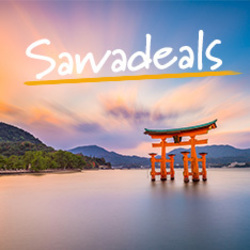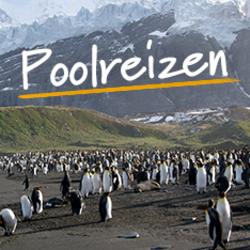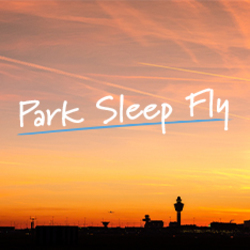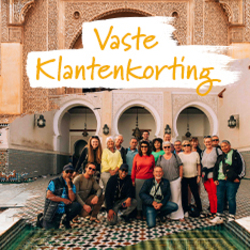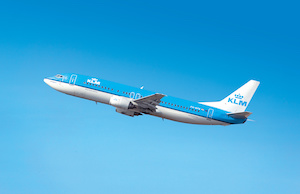Activities
- Culture
- Multi-Country Holidays
- Cultural Wonders
- Natural Wonders
- Multi-Country Culture Holidays
- — Visit Machu Picchu to discover the incredible Lost City of the Incas — Discover historic Cuzco, former capital of the vast Inca empire — Optional day walk on the Inca Trail at no extra cost (please request at the time of booking) — Spend seven nights on a small catamaran in the Galapagos Islands — Enjoy the wildlife and volcanic landscapes of the Galapagos
Food
-
1
Start Cuzco; afternoon walking tour
Welcome to Cuzco! Set high amid the altiplano, the imperial city of the Incas, was the centre of a vast empire, which stretched from Colombia to Chile at its peak. After Spanish conquistadors invaded the city, they started building on top of the Inca structures, resulting in unique architecture, a fusion of Spanish colonial and Inca styles. This afternoon, we have a short walking tour around the compact city centre to get our bearings. It is recommended to take it easy upon arrival in Cuzco and to drink plenty of water to allow your body time to acclimatise to the altitude (11,155ft/3,400m). There is a welcome briefing in the hotel lobby this evening. Accommodation: Hotel Casa Andina Standard San Blas (or similar)
-
2
Free morning in Cuzco; optional Sacred Valley tour
This morning has been left free to explore the city in more detail. The Plaza de Armas is a fantastic spot for people watching, and the Koricancha Sun Temple, in the Santo Domingo Church and monastery, is worth a visit. Outside the town are more Inca ruins, notably the fortress of Sacsayhuaman where Inca armies made their last stand against the Conquistadores. After lunch, we transfer into the Sacred Valley to overnight in the charming town of Ollantaytambo with an option to visit the ruins above the town. Alternatively, you may wish to take an optional visit to the Sacred Valley of the Incas and the incredible ruins at Pisac. Various other optional activities can be arranged from Cuzco ending in the Sacred Valley – your leader has the details. Accommodation: Tunupa Lodge (or similar)
-
3
Train to Aguas Calientes; optional "One-day Inca Trail" hike via Wiñay Wayna ruins
This morning, we take the train to Aguas Calientes, a lively town in the valley below Machu Picchu. This afternoon and the rest of the day is free for visits to the hot springs or shopping in the large craft market. Our Machu Picchu entrance ticket is valid for tomorrow; however, should you wish to visit the ruins today as well, you need to purchase an extra ticket. Please inform your leader at the start of the tour if you would like to purchase an extra entrance ticket to Machu Picchu. For those who wish to hike to Machu Picchu, there is an optional full-day trek that meets with the final section of the Inca Trail. The trail starts at Km104 and climbs 1.25mi (2km) to the ruins of Wiñay Wayna, from where we continue to the Sun Gate for the iconic view of Machu Picchu and its magnificent backdrop. Although this optional hike is available at no extra cost, it must be pre-booked since numbers are strictly limited (and a permit is required). You should request this at the time of booking and note the first part of the hike is a steep climb. A packed lunch is included today. Accommodation: Hotel Hatun Inti Classic (or similar)
-
4
Morning tour of Machu Picchu; afternoon return to Cuzco
To beat the day-trippers from Cuzco, we get an early start for our 30-minute bus drive up the winding road to Machu Picchu. Machu Picchu is an architectural and engineering marvel with a mountain backdrop of staggering immensity. The Spaniards never found it, the Incas left no records, and so Machu Picchu remained a great enigma, a city lost for centuries in the jungle until it was rediscovered in 1911 by the American historian Hiram Bingham. Please note, exploring the ruins involves a reasonable amount of walking, including up and down steep and uneven stone steps. After our tour, we return to Aguas Calientes for lunch and the afternoon train back to Ollantaytambo (1hr 30min). From Ollantaytambo, we continue by private bus to Cuzco (1hr 30min) and a well-deserved rest. Accommodation: Hotel Casa Andina Standard San Blas (or similar)
-
5
Fly to Quito
We depart Cuzco on a flight to Quito via Lima. Quito (9,350ft/2,850m) has one of the best-preserved colonial centres in South America and plenty of vibrant markets to explore. Accommodation: Hotel Casona de la Ronda (or similar)
-
6
Quito city tour
We have a half-day city tour of Quito, one of the smaller and more attractive of the South American capitals. In the western cordillera of the Andes, it is the second highest capital in the world and, as always at altitude, it is a good idea not to do anything too strenuous at first! We explore the colonial centre with its narrow streets and hanging balconies. The tour usually includes the Independence Plaza, flanked by the Presidential and the Archbishop palaces plus La Compañia Church with its impressive gold-leaf decorations. A short drive brings us to El Panecillo Hill for a panoramic view of the city and to admire the 145ft (45m) tall statue of the Virgen de Quito, the only original Madonna with wings. Please note, entrance fees are not included. Accommodation: Hotel Casona de la Ronda (or similar)
-
7
Fly to San Cristóbal Airport and visit Interpretation Centre
Morning: Fly to Galapagos Transfer to Quito Airport and fly to San Cristóbal Airport in the Galapagos Islands. Upon arrival, you will pass through the airport inspection point to make sure no foreign plants or animals are introduced to the island, and to pay the national park entrance fee. Your guide will meet you, help you collect your luggage and escort you on a short bus ride to the harbour where a dinghy will take you to the yacht. Afternoon: Interpretation Centre The Interpretation Centre provides a perfect explanation of this unique archipelago – the exhibition reveals what makes it so unique. Information panels, pictures, documents, maquettes and dioramas delve into the background and conservation stories of the islands. Accommodation: Archipel I
-
8
Sante Fe and South Plaza
Morning: Sante Fe Sante Fe is a jewel of the Galapagos, where the pale Barrington land iguana and practically every other creature is unique to the archipelago or this island alone. Afternoon: South Plaza Popular South Plaza is not to be missed! This Jurassic islet is the best place to see the emblematic Galapagos dragons, which crawl across it. Accommodation: Archipel I
-
9
North Seymour and Chinese Hat
Morning: North Seymour North Seymour is another cruise highlight. It’s home to the most extensive seabird breeding colony in the archipelago and you can walk just a short distance from frigatebirds and blue-footed boobies. Afternoon: Chinese Hat Chinese Hat is a 170ft (52m) high volcanic cone, forming another islet right off the rocky coast of Santiago, where a small colony of Galapagos penguins have settled. Approaching Chinese Hat from the north, you will understand the meaning of the name. This is an excellent place to learn more about volcanoes, lava bombs and lava tunnels. You arrive just in time to see how this barren islet is being colonised by pioneer plant species! Beautiful beaches of white coral sand and holes in the eroding lava fields are filled with lava sand, which enables rooting. Galapagos sea lions and countless marine iguanas contribute to fertilisation and thus create many favourable options for newcomers, such as saltbush and the sesuvium carpet. Accommodation: Archipel I
-
10
Santa Cruz Island
Morning: El Chato Reserve – Twin Craters The native scalesia forest of El Chato Tortoise Reserve is the best place to search for Galapagos giant tortoises in their most authentic setting! Despite the interesting breeding centres – where you are guaranteed to find tortoises in their corrals – there is nothing better than to observe them in their wild environment. Though it can be quite moist and muddy, your visit may turn into an adventurous quest when they have left their favourite pond silently. The Twin Craters are found on either side of the road leading to Puerto Ayora. These impressive formations are not really volcanic craters but were formed by magma domes, which hardened on the outside while the lava flowed inside, leaving huge, empty magma chambers that eventually collapsed and left two large holes. The craters lie within a lush scalesia cloud forest, a high-altitude plant species that are endemic to the Galapagos. This area is also home to the carpenter finch, which uses tools to search for food. There may also be opportunities to see the vermillion flycatcher, a small red-breasted bird. Afternoon: Fausto Llerena Breeding Center On a tour of the Fausto Llerena Breeding Center, you can see the tortoises of Española Island, ending in the tortoise exhibit corral. Tortoises of this corral are accustomed to humans – an excellent chance to photograph them. Accommodation: Archipel I
-
11
Isabela Island
Morning: Moreno Point Moreno Point is on the north coast of Isabela Island, between the volcanoes Sierra Negra and Cerro Azul. The trail runs along a solidified pahoehoe lava flow into a complex of coastal lagoons. The main attractions here are several bird species, which are found around the lakes and mangroves. Afternoon: Urbina Bay Urbina Bay runs along the west coast of Isabela, between Elizabeth Bay and Tagus Cove and close to Alcedo Volcano. It's home to large, colourful land iguanas, giant tortoises, and lots of Darwin finches. Additionally, the coastline here underwent a major uplift in 1954, which caused the shore to expand 0.75mi (1.2km) out. As a result, you can now find corals, shells, and many other calcareous organisms exposed above the water. Accommodation: Archipel I
-
12
Fernandina and Isabela islands
Morning: Espinoza Point (Fernandina) Fernandina is the third-largest island in the archipelago and has a single visitor site: Punta Espinoza, at the northeastern tip. Here, marine iguanas gather in larger groups than on any other island. They bask in the sand, swim near the shore and sometimes block the way at the landing dock. Fernandina is also home to the flightless cormorant, which can longer fly but has wings, tails and feet perfectly adapted for finding food in the ocean. Afternoon: Vicente Roca Point (Isabela) While having lunch, we cross the Bolivar Channel for the last time to Vicente Roca Point, just at the mouth of Isabela’s seahorse-shape. While entering a dark cave below a spectacular arch, the roar of waves accompanies you and, just around the corner, the collapsed amphitheatre of Volcan Ecuador offers an impressive view. The calmer cove waters are well-protected against the ocean swell and are fairly cold, but a great place for snorkelling among various species of shark, penguin, puffer fish and even seahorses. Accommodation: Archipel I
-
13
Santiago and Rabida islands
Morning: Puerto Egas (Santiago) Puerto Egas is historic and the favourite site on Santiago for wildlife lovers; it’s even the best place in the archipelago to observe Galapagos fur seals. Afternoon: Rabida Upon landing at this remarkable red beach, you will usually be greeted by a large bachelor colony of Galapagos sea lions. Accommodation: Archipel I
-
14
Disembark Santa Cruz; fly Baltra to Guayaquil and end
Morning: Black Turtle Cove (Santa Cruz) and transfer to Baltra Airport Our last adventure is brief but enchanting and takes place en route to the airport. Explore by dinghy the green landscape of Black Turtle Cove, which is mostly comprised of mangrove trees that host innumerable aerial and aquatic species. The quiet emerald lagoon and surrounding shallow bays enable the easy observation of sea turtles and groups of sharks. Then, assisted by the naturalist guide and some crew members, the dinghy will bring you and your luggage to Baltra, where we take the airport shuttle. From here, we fly to Guayaquil where it's possible to connect with international flights from 6pm onwards.




